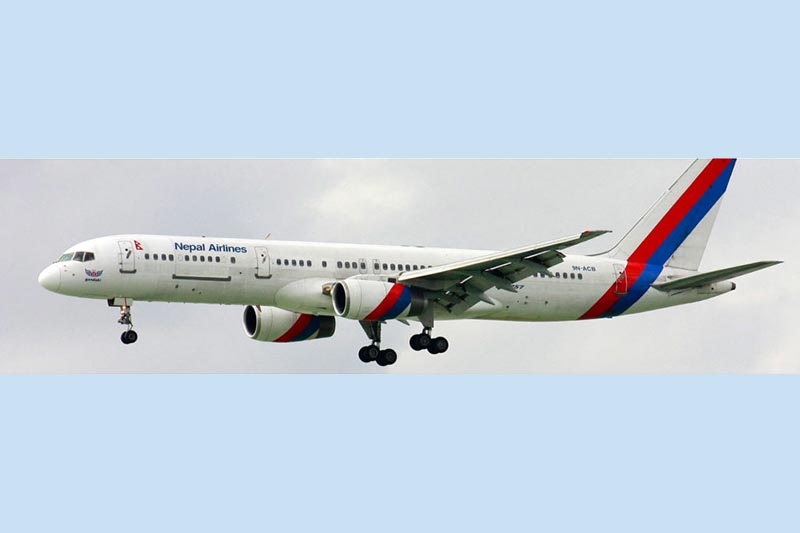NAC’s image dives further due to inefficient management
Kathmandu, July 28
The recent addition of two wide-body aircraft to Nepal Airlines Corporation (NAC)’s fleet may do little to recover the national flag carrier’s long-tarnished image, as lack of efficient management could result in the two new long-range planes remaining grounded for a while.
Owing to ‘procedural delays’, even the first of the two aircraft that had been delivered a month ago is yet to be put into operation. The second aircraft arrived on Thursday, July 26. It is uncertain when it will be able to take to the skies.
NAC had availed a loan of around Rs 22 billion from the Employees Provident Fund and Citizen Investment Trust to purchase the two aircraft that are currently gathering dust at the Tribhuvan International Airport. Moreover, it is planning to place the order for two narrow-body planes in the near future.
“Every minute that the planes remain grounded is a loss because the interests are piling up, but the NAC has been turning a deaf ear towards public criticism over its inefficient management,” said Uttar Kumar Khatri, joint secretary at the Financial Sector Management and Corporation Coordination Division under the Ministry of Finance (MoF).
Moreover, NAC has been changing the schedule of commercial operation of the first wide-body aircraft. It was supposed to fly to Doha from August 1. But now NAC’s Managing Director Sugat Ratna Kansakar is saying that first aircraft will start commercial operation from ‘first week of August’.
Kansakar, however, passed the buck to the Civil Aviation Authority of Nepal (CAAN), citing the authority has been delaying the issuance of air operator’s certificate (AOC). “We are hoping to get it in the next few days.”
And yet, in a clear display of inefficient management and planning, NAC issued advertisements for pilots, sought landing permit and initiated other procedures after the aircraft arrived.
NAC had sealed the aircraft purchase deal with the supplier company AAR Corp in April 2017. “This delay in putting the new aircraft into operation can only be blamed at inefficient management of NAC,” said a high-level source at the Ministry of Culture, Tourism and Civil Aviation (MoCTCA), stressing on the need to restructure the ailing carrier.
Meanwhile, NAC’s Kansakar said that it will not take such a long time for the second aircraft to be put into commercial operation. “First, we will clear the customs tariff of the aircraft as we have to submit around one per cent of the cost as customs duty,” he said. “Then we will apply for the AOC from CAAN.”
But likening NAC’s mentality to ‘digging a well only after the house catches fire’, MoF’s Khatri said, “It’s shocking that the NAC management seems to have done absolutely nothing in terms of ensuring the planes could be put into operation as soon as possible, even though they knew way ahead when the aircraft were to be delivered.”
The government has provided guarantee from the side of NAC to avail loans to purchase aircraft so that the national flag carrier can intervene in airfare in Kathmandu sector, which is almost monopolised by the international carriers.
Binayak Shah, general secretary of the Hotel Association Nepal, also emphasised that the national flag carrier must be operated efficiently for the development of tourism industry in the country. “Dynamics of the tourist inflow can be changed if the national flag carrier is operated efficiently,” he opined.
NAC now has four Airbus — two narrow-body and two wide-body — and one Boeing 757 aircraft in its international fleet. NAC currently flies to eight foreign destinations, and plans to expand its service to three additional destinations namely, Saudi Arabia, Japan and South Korea along with the launch of the commercial operation of the two newly purchased Airbus aircraft.
Stating that the prime minister himself had recently expressed concerns over the delay in commercial operation of the newly acquired planes, MoCTCA officials expressed hope that NAC will sort out all the issues that need to be tackled without delay.






